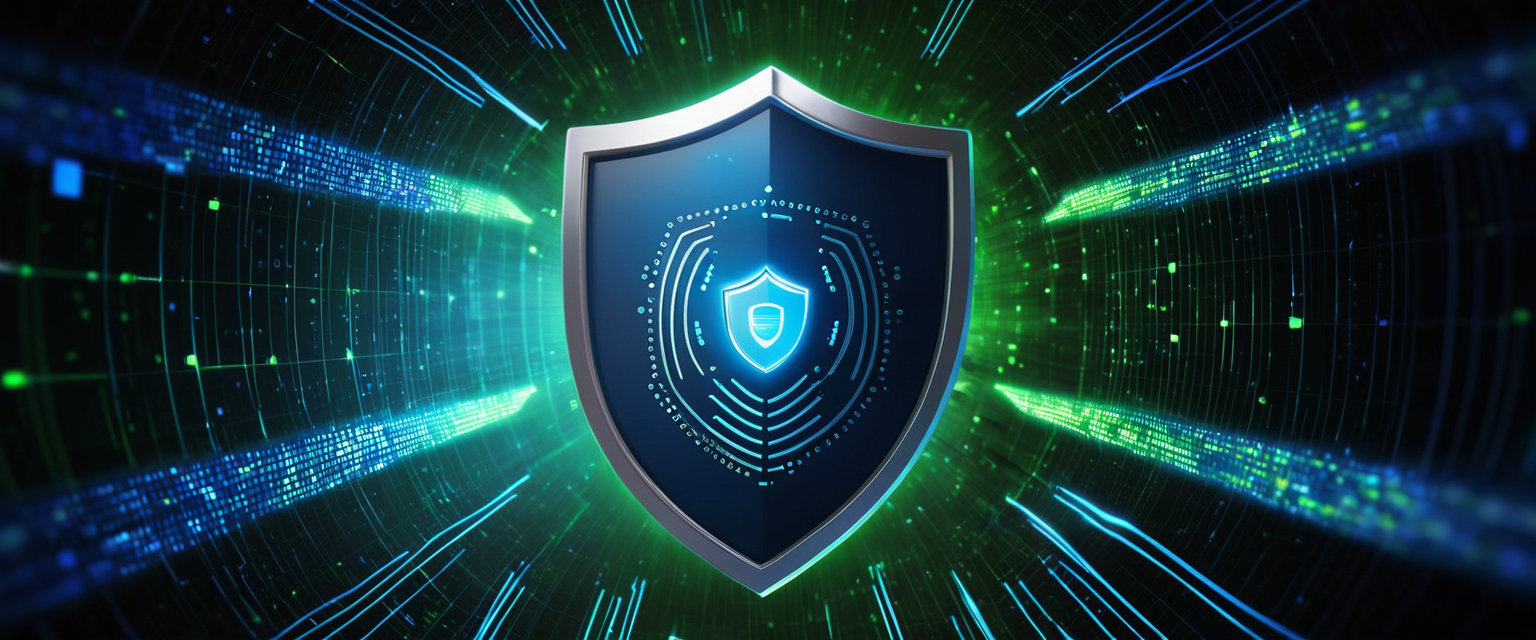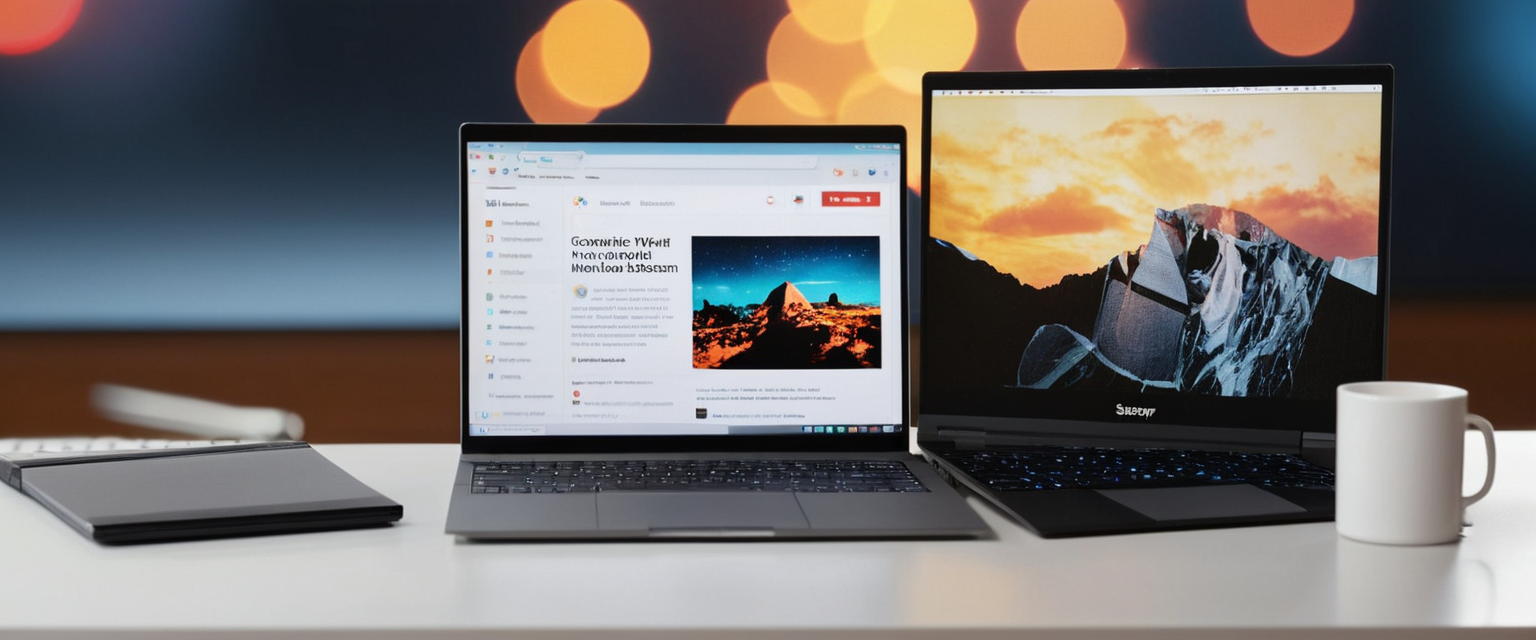
Free antivirus software has become increasingly sophisticated and reliable in 2025, with major providers delivering comprehensive protection that rivals paid solutions for many users. The shift toward free options reflects both technological advancement and changing market dynamics, with free antivirus usage rising to 61 percent of all antivirus users, up from 52 percent in 2024, demonstrating that consumers increasingly trust no-cost security solutions. A good free antivirus today requires balancing robust malware detection capabilities with minimal system performance impact, while offering essential features like real-time protection, ransomware shielding, and web threat prevention—all without aggressive upselling tactics or bundled bloatware that degrades user experience. This report examines the criteria that distinguish excellent free antivirus providers from mediocre ones, analyzes the leading free antivirus solutions currently dominating the market, and provides evidence-based guidance for selecting protection that meets individual security needs without requiring paid subscriptions.
The Evolution of Free Antivirus and What Makes Quality Solutions Stand Out
The free antivirus market has undergone substantial transformation over the past decade, evolving from rudimentary signature-based detection systems to sophisticated, machine-learning-powered security engines that often match the protection capabilities of their premium counterparts. What separates a quality free antivirus provider from mediocre alternatives extends beyond mere malware detection rates, encompassing several critical dimensions that directly impact user security and satisfaction. A good free antivirus must provide real-time protection that actively monitors system activity and file access without requiring manual intervention, a feature that distinguishes truly protective solutions from basic on-demand scanners that leave systems vulnerable between manual scans. The hallmark of quality free antivirus extends to how providers balance feature richness with usability, recognizing that complex interfaces and excessive configuration requirements often lead to operator error or complete disengagement from security practices.
Modern free antivirus providers have learned that user experience cannot be sacrificed for security, and the best free options maintain clean, intuitive interfaces that make protection automatic rather than burdensome. Another critical differentiator involves transparency in the freemium business model; excellent free antivirus providers offer genuinely useful free versions with meaningful protection rather than crippled applications designed purely to frustrate users into upgrading. This philosophical distinction manifests in whether providers use aggressive pop-ups to encourage premium purchases—a tactic that many users find intrusive and which can undermine trust in the security provider itself. Quality free antivirus makers also demonstrate commitment to regular updates, recognizing that malware landscapes shift constantly and that outdated virus definitions render even sophisticated detection engines ineffective against contemporary threats.
The testing methodology and credibility matters significantly when evaluating free antivirus quality, with independent testing laboratories providing objective assessments that help consumers navigate marketing claims. Leading independent testers including AV-TEST and AV-Comparatives have established rigorous protocols that evaluate protection effectiveness, system performance impact, and usability on standardized equipment with controlled test environments. Results from these laboratories provide the most reliable indicators of actual antivirus performance, though they should be interpreted alongside real-world user experiences, which occasionally diverge from laboratory conditions. A quality free antivirus provider demonstrates confidence in their product by pursuing certification from these organizations, displaying testing results prominently, and allowing independent verification rather than relying solely on internal testing claims.
Leading Free Antivirus Providers: Comprehensive Analysis of Market Leaders
Bitdefender: Premium Protection Without Premium Cost
Bitdefender Free Antivirus has emerged as the consensus best free antivirus option across multiple independent reviews and testing organizations as of 2025. The exceptional reputation stems from Bitdefender’s approach of offering the same core malware detection engine across its free and paid versions, ensuring that users choosing the free tier receive substantive protection rather than diminished capabilities. According to independent testing, Bitdefender achieved a 100 percent protection rate against zero-day malware and widespread malware in AV-TEST evaluations, while also achieving perfect scores in usability and performance categories in August 2025 testing. The free version includes real-time protection that continuously monitors file access and system execution, a feature notably absent from many competing free solutions, and this active monitoring combined with web protection blocks malicious downloads before they have opportunity to execute.
What distinguishes Bitdefender’s free offering is the inclusion of ransomware protection and web filtering capabilities that many free competitors restrict to paid subscribers. The ransomware protection specifically alerts users when software attempts to encrypt files, a critical early warning for one of today’s most destructive threats. Bitdefender’s interface design reflects sophisticated security principles applied to consumer-friendly presentation, allowing users to perform security operations without requiring technical expertise. However, Bitdefender Free does impose a single-device limitation, meaning users requiring protection across multiple computers must upgrade to premium versions or download multiple single-device licenses. The free version also lacks certain advanced features including VPN service, password management, and firewall functionality that appear in premium tiers, though these omissions are presented transparently without artificial crippling of the core antivirus function.
Avast: Feature-Rich Free Protection with Community Trust
Avast Free Antivirus represents the alternative champion in the free antivirus landscape, offering one of the most feature-complete free security packages despite not ranking first in all comparative reviews. Avast achieved 100 percent detection rates in AV-TEST independent evaluations and maintains strong real-time protection capabilities that defend systems during normal operation. The free version includes features notably absent from competing free solutions, including password manager functionality and firewall protection, positioning Avast as more comprehensive than minimalist competitors. Avast distinguishes itself through multi-platform support, offering free antivirus versions for Windows, Mac, Linux, Android, and iOS, recognizing that modern users operate across diverse device ecosystems.
The antivirus engine leverages Avast’s network of over 435 million users that contributes threat data in real-time, creating what the company terms Protection Cloud technology that enables faster identification and response to emerging threats. This crowd-sourced threat intelligence provides Avast users early warning about zero-day exploits and novel malware variants before traditional signature databases catch up. However, Avast’s free version exhibits a notable limitation: users report frequent, sometimes aggressive pop-up notifications encouraging premium upgrades, with some users characterizing the experience as increasingly intrusive and frustrating. This aggressive upselling strategy, while common in freemium models, generates legitimate complaints that the free version increasingly resembles bloatware designed to annoy users into paying rather than providing genuinely protective security.
AVG: Solid Protection with User Experience Trade-offs
AVG Antivirus Free operates under the same parent company ownership as Avast, leveraging comparable threat detection technology while maintaining distinct branding and interface design. AVG provides real-time protection against viruses, ransomware, and malware alongside an email shield that scans email attachments for threats, addressing an important attack vector that basic antivirus software overlooks. The free version includes a system scanner that identifies security vulnerabilities including outdated software and junk files, though remediation of discovered issues requires manual action or paid upgrades. Testing results demonstrate high protection rates with effective zero-day threat detection, positioning AVG among capable free antivirus options.
AVG’s free tier does present several usability challenges that detract from otherwise solid protection capabilities. The free version shows excessive pop-up advertisements compared to competing free antivirus software, with users reporting more frequent interruptive notifications than from equivalent competitors. Additionally, AVG creates notable system performance lag during scanning operations, a limitation that affects user experience particularly on older computers with limited processing power. Free users have no direct access to technical support, with support channels restricted to paid subscribers or requiring email communication with uncertain response times. Like Avast, AVG installation attempts to bundle the Avast Secure Browser as a default installation, requiring careful attention during setup to prevent unwanted browser replacement.
TotalAV: Beginner-Friendly Approach with Scanning Limitations
TotalAV Free Antivirus positions itself explicitly for users new to antivirus software, prioritizing intuitive interface design and straightforward operation over feature completeness. The free version provides excellent malware detection alongside data breach scanning that alerts users if their email address has appeared in known security breaches, addressing privacy concerns beyond traditional antivirus scope. TotalAV’s free tier includes system tune-up functionality that identifies and removes junk files and unnecessary programs, helping restore system performance on aging computers—a capability absent from most competing free antivirus solutions. Users praise TotalAV’s clear dashboard and logical organization of security features, making protection configuration straightforward for non-technical users.
However, TotalAV’s free version exhibits a critical limitation that distinguishes it negatively from leading competitors: the free version lacks real-time protection, requiring users to manually initiate scans rather than providing continuous background monitoring. This limitation means systems remain unprotected between manual scans, a significant compromise for users expecting modern antivirus behavior. The free version also presents frequent pop-up advertisements encouraging upgrade to paid tiers, and users report that the advertisement frequency increases with usage time, creating an increasingly frustrating experience. Without real-time protection, TotalAV’s free version functions more as an on-demand malware remediation tool than a comprehensive antivirus solution, better suited for periodic scanning than continuous protection.

Avira: Lightweight Protection with Performance Advantages
Avira Free Antivirus focuses on minimal system impact while maintaining adequate protection capabilities, appealing to users operating older computers or those prioritizing system performance above feature completeness. Avira delivers real-time protection with AI-powered threat detection that learns and adapts to emerging malware types, and the free version notably includes free VPN service for secure browsing alongside the antivirus engine. The software operates lightly on system resources, consuming minimal CPU cycles and disk space compared to heavier antivirus alternatives. Testing results confirm effective protection with appropriate detection rates and zero-day threat response capabilities.
The free version introduces several practical limitations that restrict its appeal to users requiring comprehensive protection. Most advanced features including password management functionality and phishing protection require paid subscriptions despite being advertised in marketing materials. Users report that Avira’s free version also exhibits significant system performance degradation during scanning operations and real-time protection, contrasting with marketing claims of lightweight operation. Like competing free antivirus providers, Avira employs aggressive pop-up advertising encouraging premium upgrades, with notifications becoming increasingly frequent and intrusive as users spend more time with the application. Recent independent testing shows Avira’s protection scores trending downward compared to historical performance, raising questions about detection engine effectiveness against contemporary threats.
Malwarebytes: Specialized Malware Removal Focus
Malwarebytes Free takes a fundamentally different approach from comprehensive antivirus software, positioning itself as a specialized anti-malware tool designed to complement rather than replace traditional antivirus. The free version provides powerful on-demand malware scanning and removal capabilities, with effectiveness comparable to dedicated antivirus engines when running active scans. Malwarebytes built reputation on sophisticated malware detection technology and continues excelling at identifying and removing complex threats that traditional antivirus might miss. The free version includes an excellent browser extension that blocks malicious website connections and prevents unsafe downloads, operating with minimal system performance impact.
However, Malwarebytes Free exhibits significant limitations that restrict its viability as standalone antivirus protection. Most critically, real-time protection is restricted to paid subscribers, meaning the free version only protects when users explicitly initiate scans rather than providing continuous background defense. This fundamental limitation means free Malwarebytes users require supplementary antivirus software for comprehensive protection, making it unsuitable as a primary security solution. The pricing structure reflects this positioning, with the free version serving primarily as trial software to demonstrate premium capabilities. Despite excellent technical performance, Malwarebytes Free cannot be considered a complete antivirus solution for users seeking all-in-one protection.
Key Features That Define Quality Free Antivirus Solutions
Distinguishing excellent free antivirus from mediocre alternatives requires understanding which features matter most for security while recognizing which represent marketing additions that provide minimal real-world protection value. The most critical feature for any antivirus claiming to provide meaningful protection is real-time monitoring, which continuously scans files and programs as they are accessed or executed, protecting systems against threats before malicious code executes. Real-time protection represents the fundamental difference between proactive security and reactive cleanup; without it, antivirus functions primarily as a remediation tool after infection occurs rather than preventing infection in the first place. Quality free antivirus providers offer real-time protection as standard in the free version rather than restricting it to premium tiers, recognizing that basic protection should be universal.
Protect Your Digital Life with Activate Security
Get 14 powerful security tools in one comprehensive suite. VPN, antivirus, password manager, dark web monitoring, and more.
Get Protected NowRansomware protection has become an essential feature rather than premium luxury, given ransomware’s prevalence in contemporary threat landscapes and the catastrophic consequences of successful attacks. Quality free antivirus includes specific ransomware detection and containment, either through specialized ransomware monitors or behavioral analysis that flags suspicious file encryption attempts. This feature should provide real-time alerts when software attempts to encrypt files and ideally include automatic backup or recovery capabilities. Providers restricting ransomware protection to premium subscriptions acknowledge its importance while refusing to provide it freely, a decision that prioritizes profit over baseline security.
Web protection and phishing detection constitute another essential feature, as modern attacks increasingly arrive through browser-based vectors and social engineering rather than direct file infection. Quality free antivirus includes web shield technology that blocks malicious websites and prevents phishing attacks before users encounter them. This feature typically appears in browser extensions or integrated modules that scan URLs before users click them and warn about known dangerous sites. The difference between adequate web protection and excellent web protection often lies in whether the solution blocks phishing pages through signature matching alone or combines signature-based blocking with behavioral analysis and machine learning.
Multi-platform protection increasingly matters as users operate across Windows PCs, Macs, and mobile devices including Android and iOS phones. Quality free antivirus providers recognize this reality and offer versions for multiple platforms, either through a single universal account or device-specific apps. Users managing multiple devices should prioritize providers offering comprehensive cross-platform coverage rather than Windows-only solutions. This multi-platform approach has become increasingly important as cybercriminals expand targeting to mobile devices where antivirus protection adoption lags significantly behind desktop protection.
System performance impact represents a critical quality indicator often overlooked by users focused purely on protection features. A free antivirus that provides outstanding protection but degrades system performance so severely that basic operations become frustratingly slow delivers poor overall value. Quality free antivirus providers engineer lightweight implementations that maintain solid protection while consuming minimal system resources, often employing intelligent scheduling that defers non-urgent scans until systems detect idle time. Performance testing by independent laboratories provides objective measurement of this impact; products scoring “fast” or “very fast” in performance tests indicate implementations compatible with modern computing workflows.
Protection Effectiveness and Independent Testing Results
Evaluating protection effectiveness requires looking beyond vendor marketing claims to independent testing results from organizations with established credibility and transparent methodologies. AV-TEST and AV-Comparatives represent the gold standard for independent antivirus testing, conducting rigorous evaluations using controlled environments, standardized malware samples, and published evaluation criteria. Results from these organizations provide far more reliable information than vendor claims or reviews from sources with undisclosed conflicts of interest. The August 2025 AV-TEST results for Windows 11 home user antivirus software provide recent benchmark data showing how leading free antivirus options perform against real-world threats.
In August 2025 AV-TEST evaluations, Avast Free Antivirus achieved a perfect 100 protection score, identifying 100 percent of real-world threats tested. AVG Internet Security also achieved 100 protection score, demonstrating that despite user experience limitations, AVG’s underlying protection technology performs excellently. Avira Internet Security similarly achieved 100 protection score, indicating that lightweight design doesn’t compromise detection effectiveness. Bitdefender Total Security achieved 100 protection score while also earning perfect performance and usability ratings, explaining its top-tier market positioning. Microsoft Defender Antivirus achieved 100 protection score, validating the built-in Windows protection that many users already possess. These results demonstrate that multiple free and built-in antivirus options successfully detect known and zero-day threats when provided with current virus definitions.
However, protection testing results mask important distinctions between products. AV-Comparatives real-world protection testing reveals more nuanced differences, with Bitdefender achieving a 99.6 percent protection rate while Avast achieved 100 percent in recent evaluations. In-house testing at various security research organizations shows similar patterns, with leading products detecting 90-100 percent of malware samples during real-time protection scanning. These subtle differences matter little for everyday users but become significant for high-risk populations including financial professionals, journalists, and activists facing advanced targeted threats. Most users gain adequate protection from any of the top-tier free antivirus options; differentiation occurs through secondary features, performance impact, and user experience rather than fundamental detection gaps.
Performance Impact and System Resource Consumption
The antivirus paradox presents a genuine dilemma: comprehensive protection typically requires scanning system resources regularly, potentially slowing computers during that scanning process. Quality free antivirus providers engineer solutions that minimize this performance impact through intelligent scanning algorithms, efficient implementations, and scheduling that avoids user-facing slowdowns. AV-Comparatives April 2024 performance testing provides objective data comparing system impact across different antivirus solutions, evaluating impact across file copying, application launching, web browsing, and other user workflows.
Results from that performance testing showed McAfee and Kaspersky achieved the lowest performance impact with overall AVC scores of 90, indicating minimal noticeable slowdowns. Bitdefender achieved an 85 AVC score with 95.3 Procyon score, placing it mid-range for performance while maintaining excellent protection—a reasonable trade-off for comprehensive features. Avast achieved an 85 AVC score with 90.7 Procyon score, similar performance positioning to Bitdefender. AVG achieved 90 AVC score with 90.8 Procyon score, indicating good performance compatibility. TotalAV achieved a lower 78 AVC score with 17.2 percent impact score, indicating more noticeable performance effects that might affect user experience on older computers. These results suggest that excellent protection and acceptable performance represent achievable balance rather than forced choice.
The performance implications extend to specific user activities, with the testing demonstrating differential impact across different workflows. File copying operations show minimal performance impact from most modern antivirus solutions. Archiving and unarchiving files creates more noticeable slowdowns as antivirus scans compressed file contents, typically showing “fast” or “mediocre” performance rather than severe degradation. Application launching shows variable impact, with some antivirus solutions adding noticeable delays as files load, though well-optimized solutions minimize these delays. Web browsing performance remains largely unaffected by modern antivirus web shields, which employ efficient filtering rather than full content scanning. The consistent finding across performance testing indicates that quality free antivirus software imposes minimal performance penalties on modern computers, particularly those with multi-core processors and sufficient RAM.
Limitations of Free Versions and Understanding Feature Restrictions
Understanding why antivirus companies restrict certain features to paid subscribers helps users evaluate whether free versions meet their needs or if premium upgrades provide necessary functionality. The freemium business model operates on assumptions that users will either tolerate feature limitations or upgrade to paid tiers upon encountering restrictions. Legitimate restrictions often include multi-device coverage, priority customer support, and advanced features like VPN services or password managers—additions that justify premium pricing while core antivirus protection remains functional in free versions. However, some antivirus providers restrict fundamental capabilities like real-time protection to paid subscriptions, effectively making free versions unsuitable as standalone antivirus solutions.
A quality free antivirus provides genuine protection through free offerings rather than crippled applications designed purely to generate frustration. Bitdefender Free provides the same core malware detection engine as premium versions, only restricting multi-device support and advanced supplementary features. Avast Free provides genuine real-time protection and ransomware shielding free of charge, restricting features like sandbox mode and phishing protection that enhance protection beyond baseline. These approaches respect that many users require capable free protection and cannot afford premium subscriptions, a philosophy embodied by providers who maintain genuinely useful free tiers.
The flipside exists where some free antivirus versions impose artificial restrictions on fundamental protection capabilities, treating free users as experimental populations or deliberate restriction targets. Malwarebytes Free restricts real-time protection entirely, positioning the free version as an on-demand malware removal tool rather than continuous protection. TotalAV Free similarly withholds real-time protection, requiring users to manually initiate scans despite modern security requiring continuous monitoring. AVG Free fails to enable real-time protection by default, requiring user configuration despite real-time protection representing standard expectations in modern antivirus. These restrictions force evaluation of whether free versions genuinely solve user security needs or merely tempt users toward paid subscriptions by making free versions inadequate.

Bloatware and Unwanted Program Installation Concerns
The antivirus industry has developed a reputation for bundling unwanted software with both free and paid products, practices that transform security software into bloatware when installation includes programs users never chose and don’t want. Avast consistently draws criticism for attempting to install its Avast Secure Browser as a default component during installation, replacing users’ existing browser without explicit permission. AVG exhibits similar behavior, attempting to install the Avast browser during AVG antivirus installation, despite the two being distinct products. These practices require careful attention during installation, specifically unchecking browser replacement options before proceeding, transforming antivirus installation into a multi-step verification process rather than straightforward security enhancement.
Beyond bundled applications, some antivirus software installs excessive supplementary programs or toolbars that degrade system performance and user experience. Users report Avast increasingly exhibiting bloatware characteristics, with unnecessary programs and excessive notifications degrading the user experience and suggesting declining quality as the company prioritizes upselling over user satisfaction. The distinction between legitimate supplementary features and bloatware proves important when evaluating antivirus quality; Bitdefender Free includes essential features without unnecessary bundling, while AVG and Avast require vigilant installation management to prevent unwanted software installation.
Quality free antivirus providers demonstrate respect for user autonomy by offering clean installations that include only security components without bundled applications, supplementary software, or aggressive installation wizards designed to trick users into unwanted installations. Installation processes should be straightforward, making optional components explicitly clear and defaulting to security-only installations unless users specifically request supplementary tools.
Windows Defender and Built-in Operating System Protection
An often-overlooked consideration in free antivirus evaluation involves the protection already present in Windows 11 and Windows 10 through Windows Defender (now branded as Microsoft Defender)—built-in antivirus functionality included free with the operating system. Windows Defender has evolved substantially from its earlier iterations, achieving protection scores competitive with leading third-party solutions in independent testing. Recent AV-TEST evaluations show Microsoft Defender achieving 100 percent protection scores and 91.7 usability scores, positioning built-in Windows protection as capable. A YouTube analysis of Windows Defender performance against 2,000 real-world malware samples showed 100 percent initial detection rate, validating contemporary Microsoft threat detection capabilities.
Windows Defender’s advantages include zero installation complexity—users already possess it—zero cost, minimal system performance impact due to deep integration with Windows, and automatic updates through Windows Update ensuring current threat definitions. Users have genuine questions about whether Windows Defender suffices for their security needs or whether third-party antivirus adds meaningful protection. For users with safe browsing habits, regular software updates, and no specific high-risk activities, Windows Defender provides adequate baseline protection without requiring additional antivirus installation. Professional users, financial professionals, and high-risk populations benefit from third-party antivirus offering advanced features and dedicated threat research that Windows Defender’s consumer focus may not prioritize.
The decision to use Windows Defender alone versus supplementing with third-party antivirus represents a genuine security choice rather than clear right answer, with both approaches offering reasonable rationale. Users choosing Windows Defender alone should ensure real-time protection remains enabled and commit to regular system updates, recognizing this approach trades advanced features for simplicity and performance. Users choosing third-party antivirus should recognize they lose some system integration benefits but gain specialized threat research and advanced features that Windows Defender may not prioritize.
Market Trends and User Adoption Patterns in 2025
The antivirus market experienced significant shifts in user behavior during 2024 and 2025, with free antivirus usage surging to 61 percent of antivirus-using populations, up from 52 percent in 2024, indicating growing consumer confidence in free protection solutions. This trend reflects both improved quality in free antivirus software and economic pressures reducing discretionary spending on security software. Simultaneously, paid antivirus subscription usage declined from 44 percent to 36 percent of users, with the remaining percentage uncertain about their protection status. These market shifts represent fundamental changes in consumer expectations and antivirus industry dynamics.
Approximately 66 percent of U.S. adults used antivirus software in 2025, representing roughly 169 million people, though adoption remained flat year-over-year from 2024. Among users, 41 percent employ antivirus exclusively on personal devices, up from 39 percent in 2024, while 25 percent maintain antivirus on both business and personal devices. Notably, 34 percent of Americans continue browsing without any antivirus protection, despite 85 percent believing antivirus is necessary, indicating a significant gap between perceived necessity and actual adoption. This protection gap represents genuine security risk, particularly for the estimated 10-11 percent of non-users planning antivirus adoption within six months.
When examining which providers dominate market usage, Microsoft Defender, McAfee, and Norton emerged as the most commonly used antivirus programs for the second consecutive year, indicating strong market position retention among major brands. However, these aggregate statistics mask important distinctions between paid subscription users versus free versions; Microsoft Defender dominance reflects Windows built-in protection prevalence, while Norton and McAfee represent subscription antivirus rather than free offerings. Among dedicated free antivirus users, Bitdefender and Avast maintain strong visibility based on their positioning as top free options in virtually all independent reviews.
User confidence in antivirus effectiveness declined, with only 25 percent of users considering antivirus “very effective,” while 63 percent believe safe browsing habits matter more than antivirus software. This perception gap reflects realistic security principles—antivirus cannot prevent all threats and user behavior represents the ultimate determinant of security—but also suggests users may not appreciate how modern antivirus actually operates or what protection realistic antivirus can provide. Cost remains the primary barrier to paid antivirus adoption, with 45 percent of non-users citing expense as the reason they don’t use antivirus, while 57 percent worry security software vendors could misuse personal data collected through monitoring activities. These barriers—cost concerns and privacy worries about antivirus companies—directly influence decisions to use free solutions or no antivirus at all.
Platform-Specific Considerations: Windows, Mac, Android, and iOS
Quality free antivirus providers recognize that modern users operate across multiple operating systems, with computers running Windows or macOS, smartphones running Android or iOS, and sometimes tablets running additional platforms. Windows remains the dominant platform for desktop antivirus deployment, with approximately 70+ percent of computers running Windows. Windows users possess the advantage of Windows Defender built into the operating system, providing automatic baseline protection without additional downloads. Third-party free antivirus for Windows includes excellent options from Bitdefender, Avast, AVG, Avira, and others discussed extensively in this report.
Mac antivirus has historically received less attention than Windows protection, with some users incorrectly believing macOS inherently resistant to malware through superior architecture or isolation from Windows-based threats. This assumption encourages dangerous Mac user complacency, despite Macs facing increasing malware targeting specifically, with sophisticated trojans and ransomware variants designed for macOS systems. Quality free antivirus providers offer Mac versions including Avast, Avira, Bitdefender, and others. Mac users should recognize that free and paid antivirus options provide equivalent protection to Windows users rather than relying on false security beliefs about macOS inherent protection.
Android antivirus represents a growing necessity as smartphones become primary computing devices storing sensitive financial information and personal data. Free antivirus options for Android include Bitdefender Mobile Security, Avast Mobile Security, Avira Security, and Malwarebytes Mobile Security, each providing real-time protection against Android-specific malware and phishing threats. The Android ecosystem presents unique security challenges including reliance on Google Play Store security screening that sometimes fails to detect malicious apps, combined with users less accustomed to security vigilance on mobile devices compared to computers. Quality free Android antivirus provides essential protection for this increasingly important device category.
iPhone and iPad antivirus represents a less critical need compared to Android, given iOS’s closed architecture limiting app installation to official Apple App Store and strict app review processes that detect obvious malware before distribution. However, iOS users still benefit from protection against phishing attacks, malicious websites, and sophisticated attacks targeting iOS specifically. Some free antivirus providers offer iOS versions primarily providing web protection and privacy features rather than traditional antivirus scanning. The decision to install iOS antivirus represents lower priority than Android protection but addresses real threats including phishing and malicious websites that affect iOS users.
Selecting the Right Free Antivirus for Individual Needs
Choosing appropriate free antivirus software requires honest assessment of individual risk profile, technical sophistication, device ecosystem, and specific security priorities. For most users with typical internet usage patterns including email, web browsing, social media, and online shopping, Bitdefender Free or Avast Free provide excellent all-around protection combining solid detection with user-friendly interfaces and reasonable system performance impact. These two represent consensus best options across virtually all independent reviews and testing organizations.
Users specifically concerned about system performance on older computers or minimalist approaches should consider Avira Free, which deliberately optimizes for lightweight operation at slight cost to feature completeness. Users managing multiple devices across platforms and appreciating comprehensive feature sets should evaluate Avast Free, which offers cross-platform support and multi-feature protection including firewalls and password managers. Users requiring basic on-demand malware removal as supplement to existing antivirus should consider Malwarebytes Free, which excels at specialized malware detection despite lacking real-time protection.
Users needing specialized features like data breach scanning or system optimization should evaluate TotalAV Free, despite its lack of real-time protection, recognizing it better functions as supplementary protection than primary antivirus. Business users requiring comprehensive protection with customer support options should recognize that quality free antivirus provides only baseline protection; business-appropriate security typically requires paid solutions with dedicated support. Users already satisfied with Windows Defender and committing to regular system updates can reasonably rely on built-in protection without third-party antivirus, though active users should periodically verify that real-time protection remains enabled.
The decision-making process should consider specific threats individual users face, technical skills available for troubleshooting, and willingness to tolerate limitations or aggressive advertising. Users valuing clean interfaces without aggressive upselling should prioritize Bitdefender, which maintains minimalist promotional approach compared to Avast’s increasing push notifications. Users with multiple devices should prioritize providers offering cross-platform coverage rather than Windows-only solutions. Users uncomfortable with antivirus companies collecting user behavior data for threat analysis should research specific privacy policies, recognizing that all real-time protection antivirus necessarily monitors behavior to identify threats.
Finding Your Ideal Free Antivirus Provider
A good free antivirus software in 2025 combines genuine protection capabilities through real-time monitoring with user experience that respects individual autonomy and doesn’t employ aggressive manipulation toward premium upgrades. The leading free antivirus providers including Bitdefender, Avast, AVG, and Avira demonstrate that comprehensive protection is achievable without charging users for essential security, contradicting earlier industry assumptions that quality protection required paid subscription. Independent testing organizations confirm that leading free antivirus options detect real-world threats with effectiveness matching or exceeding premium alternatives, validating the free tier as genuine protection rather than crippled trial versions.
The market shift toward free antivirus usage, with 61 percent of antivirus users now employing free solutions, reflects both genuine quality improvements and economic realities affecting consumer purchasing decisions. This trend validates that free antivirus represents legitimate security strategy for most users rather than inferior compromise. However, quality free antivirus does impose limitations including single-device restriction, absence of premium features like VPNs or password managers, and sometimes limited customer support—trade-offs that most users willingly accept to avoid subscription costs.
Evaluating specific free antivirus options requires looking beyond marketing claims and brand familiarity to independent testing results, real-world user experiences, and assessment of which features matter for individual security needs. Bitdefender Free emerges consistently as the top recommendation combining strong protection, minimal system impact, clean user experience, and reasonable feature set without aggressive upselling. Avast Free provides comprehensive alternatives with extensive features and cross-platform support despite increasingly aggressive premium upselling. Windows Defender represents legitimate free option for typical users with safe browsing habits and regular system updates, particularly valuable for avoiding third-party software complexity.
The fundamental question “who makes a good free antivirus?” resolves not to single answer but to recognition that quality free antivirus solutions now exist from multiple reputable providers, each offering different balances between feature completeness, system performance impact, user interface design, and cross-platform support. The existence of multiple quality free options means users can select antivirus matching their specific priorities rather than forced compromise to either expensive paid solutions or inadequate free alternatives. Quality free antivirus represents genuine achievement in cybersecurity democratization, ensuring that effective protection reaches users across all economic backgrounds rather than restricting security to affluent populations able to afford premium subscriptions.






